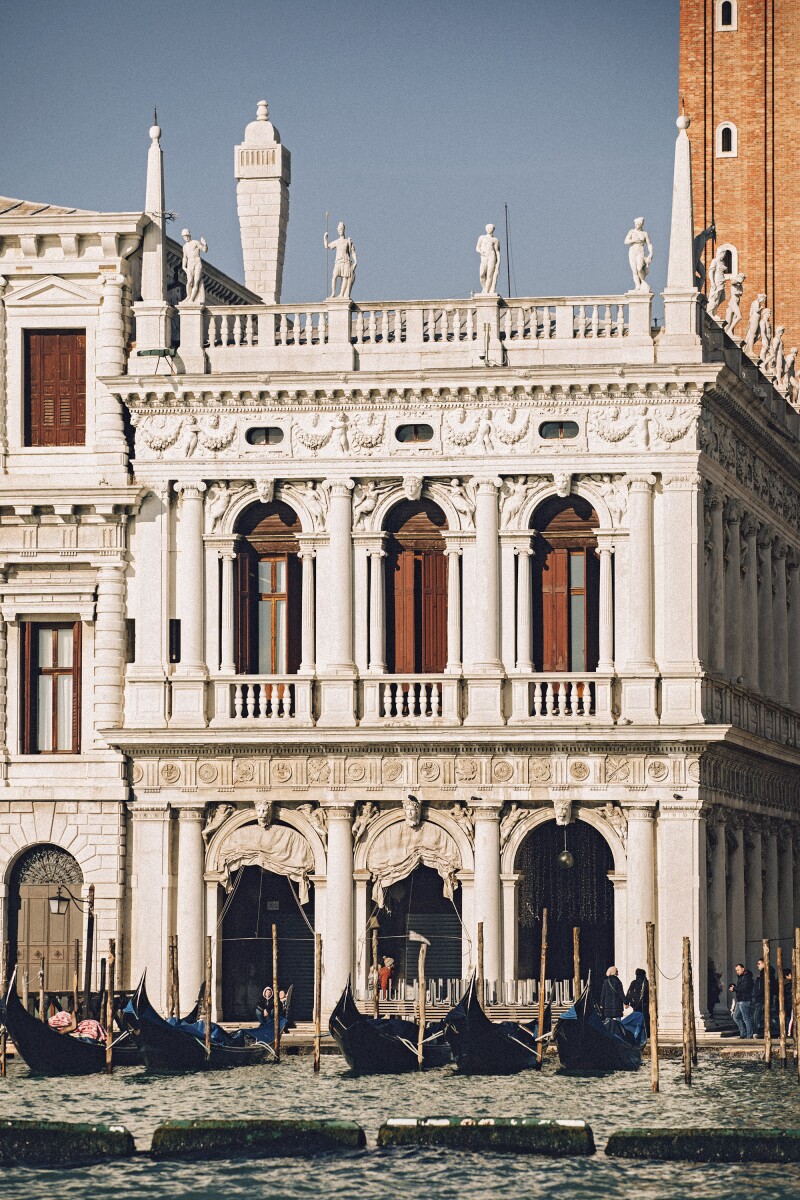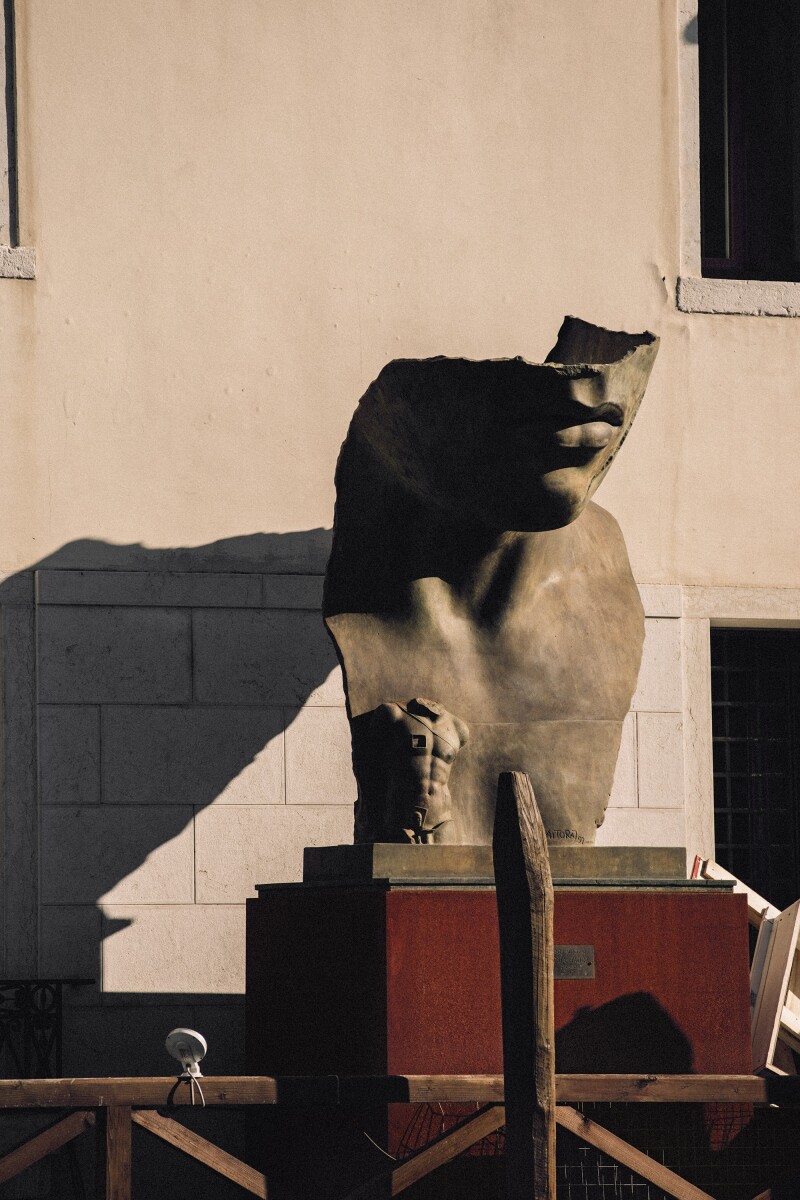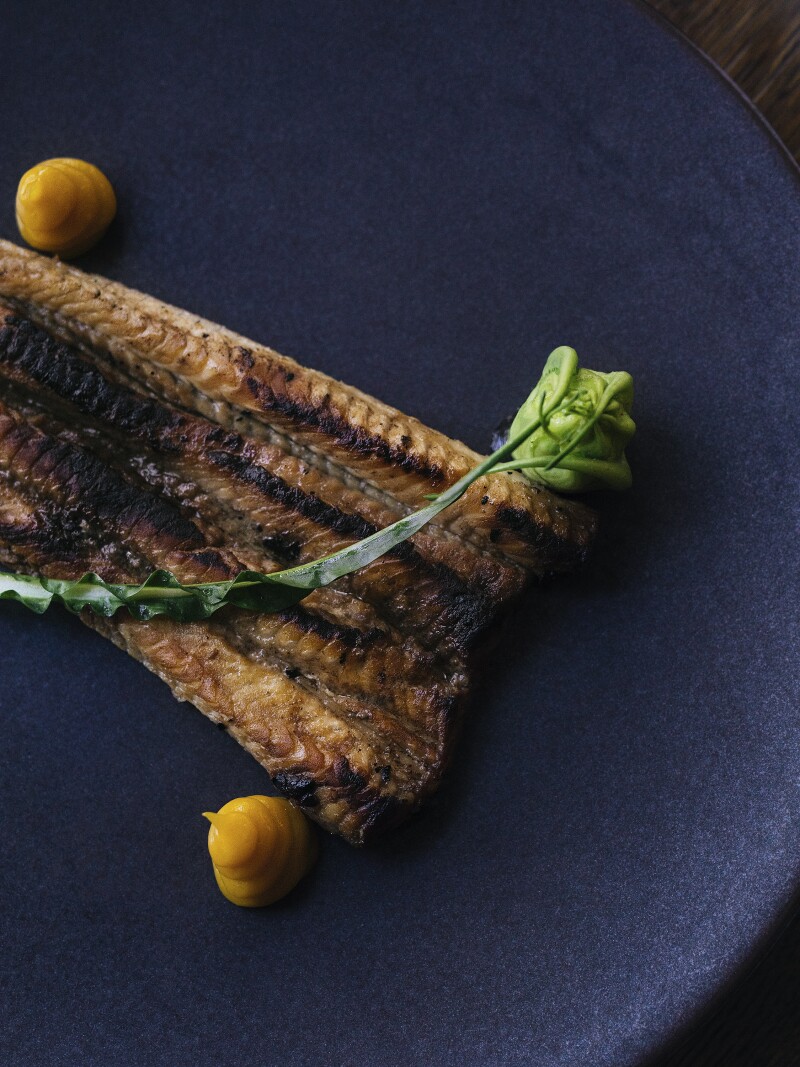This article is part of Afar, A Retrospective. As part of Afar’s 15-year anniversary celebration, this story was selected by Afar’s editors and cofounders as one of our 15 favorites. We hope you enjoy it as much as we do.
“The Venice of to-day,” wrote Henry James back in 1882, “is a vast museum . . . and you march through the institution with a herd of fellow-gazers.”
Ah, Henry, Henry. If you only knew.
A century and a half after James wrote those words, some 30 million visitors overwhelm La Serenissima each year. Its resident population meanwhile has shrunk to fewer than 53,000, from a peak of 175,000 in 1951. Mammoth cruise ships damage its centuries-old foundations and its fragile lagoon, and there is even talk of putting up permanent turnstiles for Piazza San Marco, Italy’s most iconic square.
And yet there I was last fall, trundling a suitcase into a “real,” living, uncrowded Venice. In the western end of the Dorsoduro district, modest ocher apartment buildings flanked a workaday canal where a barge unloaded sodas and cheese into a genial one-man salumeria, and students from the nearby universities dawdled over macchiatos at a sweet local bar, which, come early evening, dispensed two-euro spritzers and tasty cicchetti, Venetian tapas. Settling into my Airbnb—massive, affordable, and furnished with time-capsule ’50s decor—I surveyed the scene from my back balcony. Below me lay small residential backyards, their trees still heavy with oranges in late October, under unseasonably bright skies.

Michela Scibilia, a Venice local, says one way to save the city is to help preserve its crafts and traditions.
Photo by Robbie Lawrence
I had come to suss out the realities beyond the sensationally alarming headlines. To search for a slow version of Venice and explore local grassroots initiatives. How are Venetians coping with overtourism? And how might one be a good, responsible guest in this beleaguered, flickering dream of a city?
“The problem with all the relentless negative press,” declared Michela Scibilia on my first evening, “is that the day-trippers in Piazza San Marco don’t read the reports—and don’t care.” She twirled the cloudy wine in her glass. “But the kind of tourists we need, return visitors who truly love Venice, they read them—and go elsewhere.”
I had reached out to Michela after admiring her excellent practical handbooks such as A Guide to the Eateries of Venice, which is filled with recommendations of casual restaurants where locals take their ombre—small glasses of wine accompanying cicchetti. We were at the snug Osteria al Cicheto now, one of her favorites, tucked away in a Google map–defying alley near the train station. “Here it’s so well hidden,” she said over a plate of baccalà mantecato, the Venetian salt cod classic, “the clientele remains mostly local.”

The Biblioteca Nazionale Marciana looks out from Piazza San Marco over the Grand Canal and the Giudecca Canal.
Photo by Robbie Lawrence
Michela has been described as a “persona vulcanica” for her activism. A graphic designer as well as book author, she came to Venice from Treviso three decades ago and never left. “But,” she lamented, “Venetians are leaving in droves.” Everyone who can gives their apartment to agencies to rent to tourists. So rental prices for locals have skyrocketed. Suddenly I didn’t feel so celebratory about my Airbnb.
For those who do remain, Michela went on, Venice represents “a choice, a commitment.” Most of her friends belong to at least four associations, trying to preserve Venetian life with small concrete actions: cleaning up graffiti on weekends, buying honey from a beekeeper on the island of Sant’Erasmo, helping restore a traditional boat. “One good way to save Venice? Save its crafts and professions,” she said.
Leading me on to the next osteria, Michela stopped a moment to greet a blond woman with a weathered, resolute look. Her name was Gloria Rogliani, and she was a multi-regatta champion in voga alla veneta—the age-old upright, forward-facing rowing technique of Venice’s iconic gondoliers. She offered to show me around the next day.

Local businesses are even easier to locate, thanks to an initiative called Venezia Autentica.
Photo by Robbie Lawrence
Naturally, I expected Gloria to pick me up in a gondola. Instead she pulled up in her workhorse motorboat (“my pony”) and shot us bouncing across the expansive Giudecca Canal—with me hanging on for dear life—and on to Giudecca Island’s open lagoon side. This was a working face of Venice I’d never seen before: dry docks, an unloading place for trash barges, and a squero, or a gondola boatyard, where Gloria tied up for me to meet one of the city’s last great master gondola makers and a champion regatta rower himself.
Gray-bearded and long-haired, 72-year-old Franco Crea resembled a gloomy, grand-fatherly bear in a camouflage jacket. Boat hulls awaiting repair and the complex skeletal beginnings of two gondolas surrounded him. “A gondola is a work of art,” he announced. “Custom made to an asymmetric design for each gondolier—eight different woods, 280 pieces, 500 hours to build. But who commissions such boats anymore?” Nobody is interested in the subtleties, the real thing, he said. It’s all cheap plastic now. He makes only two or three gondolas a year these days. But gondolas wouldn’t survive at all without tourism, Gloria noted. Franco agreed, but he remained glum. “The city of the 1950s no longer exists,” he declared. “Venice and I will go to the cemetery together.”
The city of the 1950s no longer exists. Venice and I will go to the cemetery together.
Not one to indulge in Venice epitaphs, however, dynamo Gloria zoomed us off toward the violin-head buttresses of La Salute basilica. Right behind it sat Istituto Turistico Sportivo Marinelli Fonte, a small vocational school where a new generation of Venetians is being trained in innovative tourism, as guides, tour operators, and hoteliers fluent in sports, languages, Venetian history, and of course, voga alla veneta. Many of the students are children of local athletes; some come from generations of gondoliers—that “very closed breed,” Gloria whispered, “who act like they own the city.”
For Gloria, voga offers the most profound means for the young to connect with Venice’s essential aquatic roots. “At one time voga was as important here as walking,” she declared while showing me a classroom. Her goal, she went on, as we clambered back into her motorboat, is to help educate “true” Venetians who “won’t betray and abandon their city, who’ll give something back—and help mold a new breed of visitor.”

Supermarket chains threaten the sustainability of traditional Italian markets by selling prepackaged panini to tourists and changing residents’ shopping habits.
Photo by Robbie Lawrence
That new, welcome breed of visitor is a non-day-tripper, ideally, who embraces and supports “authentic” Venice. So I heard from Valeria Duflot and her partner, Sebastian Fagarazzi, or Seba, the thirtysomething founders of Venezia Autentica, an initiative dedicated to sustainable tourism. One sunny afternoon, I joined them for a walk to visit one of their favorite artisans. “If just 5 percent of the 30 million visitors would change their habits,” Valeria told me, “the Venice of Venetians would thrive again.”
We set off through the campi (city squares) of the Jewish Ghetto in the Cannaregio district, where Seba, who’s half Venetian, half German, played as a kid. “Far fewer play these days,” he sighed. “When no one lives here, it’s like a body without a soul.” Seba met Valeria, a globe-trotting French Malagasy social entrepreneur, when she began visiting Venice in 2014. The following year, watching mordi e fuggi (eat-and-run) day-trippers rush past Venetian youths bellowing local songs on Cannaregio’s main thoroughfare, she had an epiphany. “This clash of realities left out people like myself,” she said. “Thoughtful visitors, you know? Eager to engage with local communities.” On the spot, she phoned Seba, by then her boyfriend, with an inspiration for bridging that gap. He was all in. His family’s iconic fashion store in the San Polo district was at risk of folding under the pressure of mass tourism, and it soon did.
So the pair launched Venezia Autentica, a “social startup” with a comprehensive website enabling visitors to connect to the true Venice by identifying local businesses. Some 150 artisans and services, from jewelers to mask makers to grocers and cobblers, have earned the organization’s endorsement so far.

Art has long been a prominent aspect of Venice.
Photo by Robbie Lawrence
We turned into an alley and entered the workshop of Il Forcolaio Matto—“The Nutty Forcola Maker,” a forcola being the unique, sinuous wooden sculpture that is the oarlock for Venetian rowing. Piero Dri, thirtysomething and the youngest of the four surviving forcolai in the city, was trained as an astronomer. He gave that up to pursue his passion for this vanishing traditional trade. We watched him assembling the long ply overlays of wood for an exquisite Venetian oar. “Brings back my childhood,” he confided quietly, “my deep connection to voga since I was four, with my grandfather.” He smiled. “A slow, real way to connect to Venice, eh?”
Another easy and pleasurable way to connect with and support the real city is gastronomic. And as I sampled cicchetti, piatti, and terroir-driven ombre wine in various neighborhoods, I was heartened to notice signs of creative regeneration in Venice’s culinary scene. One particularly exciting newcomer sits in a former electrical appliance store in the Castello district. Ristorante Local’s spare, modern aesthetic suggests Scandinavia, but it’s an entirely local creation, from the marble terrazzo floor embellished with Murano glass pieces to the bar fashioned from Valpolicella wine barrel parts.
“Ours is cucina veneziana updated for the 21st century,” announced Benedetta Fullin when she visited our table. “Made by Venetians for Venetians.” Benedetta and her brother Luca opened Local in 2015, while their father, Nico, and mother, Donatella—head of the local Slow Food chapter—stayed on at the family’s traditional restaurant, Wildner. The young chef here, Matteo Tagliapietra, cooked in London and staged at Noma. But he, too, is a “totally local ragazzo,” Benedetta assured me, “from Burano Island.”
“Some graveyard wine?” offered Luca, the resident wine expert, who also runs an online shop specializing in natural bottlings. He poured something produced on the city’s cemetery island of San Michele by an association called Laguna nel Bicchiere (Lagoon in a Glass). Venice and the lagoon were historically winemaking areas, growing dorona and malvasia grapes, until the 1966 flood mostly wiped out viticulture. But now, to Luca’s delight, it is slowly reviving through grassroots initiatives. “So this wine is a miracle,” Luca enthused, “a community preservationist project!”

Travelers can help sustain Venice by patronizing locally owned businesses, such as the appropriately named Ristorante Local, where you can order eel with puntarella and a mango-miso puree.
Photo by Robbie Lawrence
The Ristorante Local team sources produce and fish from Venice’s surroundings: violet artichokes grown in Sant’Erasmo’s clay-rich salty soil; moleche, the soft-shell crab threatened by global warming; wild herbs from Cavallino, a strip of land suspended between the lagoon and sea. “But our cooking also reflects Venice’s history as a trade capital, awash in global flavors,” Benedetta said, as she served smoked lagoon eel with a mango-miso puree.
“Such a magical, special place, our lagoon,” Luca mused. “Its minerally soil and brackish water creates amazing biodiversity. All our products from it are intensely seasonal. But it’s also incredibly fragile.” I nodded, having just learned—after all these years—that the lagoon’s average depth is only about four feet. Before channels were dredged for industrial shipping, it was less than a foot and a half. La Serenissima essentially sits in a large puddle.
“Venezia morta? No way,” declared Marino Folin, as we sipped aperitifs one evening at a white-clothed outdoor table at Caffè Quadri on Piazza San Marco. Described by Napoleon as “Europe’s finest drawing room,” the square, dominated by the Doge’s Palace and the voluptuous domes of Basilica di San Marco, is the teeming bull’s-eye for the city’s 30 million annual visitors. Of these, about 1.5 million arrive on cruise ships. But, as We Are Here Venice, a think tank fighting the harms of mass tourism, points out, the big ships cluster during the year, disgorging thousands of visitors who stream simultaneously toward the Rialto Bridge and San Marco. What’s more, the majority shareholders of Venice’s cruise terminal are the cruise companies themselves, so the vessels bring hardly any official income to the city—all the while generating pollution and displacing massive volumes of water that erode the city’s fragile historic foundations.
But it was after 6 p.m. now, most day-trippers had left, and I indulged in the San Marco magic by nursing a negroni while the orchestra serenaded with retro pop classics and the basilica shimmered like a mosaic mirage in the twilight. “Where else but Venice has so many cultural institutions, events,” Marino wanted to know, “and attracts the world’s most interesting people and energy?”
Trimly white-bearded and dapper, Marino is the Venetian architect who, with Philippe Starck, recently rejuvenated Ristorante Quadri with the help of local fabric makers, glassblowers, and art restorers. The following morning, he took me on an upbeat tour of the Rialto district, where he lives, works, and shops daily at the market.
“We’re a small city, but we have places like this incredible cabinet of wonders and absolute excellence,” Marino enthused at Antica Drogheria Mascari, a 1948 Ali Baba’s cave of comestibles suffused with aromas of dried fruit and spices, where the sweet, elderly owner plied us with nutty, slender nougat sticks and the autumn’s first candied quince.

In the past, gondolas were custom built with hundreds of different wooden pieces. Now, however, most gondolas are created with plastic, says one of Venice’s master gondola makers.
At a chic little atelier called Paper Owl, Marino asked Stefania Giannici, the young owner, “Venice—is it dead?”
Stefania’s eyes widened. “Dead? No other city makes me feel more alive!”
“There!” said Marino triumphantly.
But, I asked, what about the rumors that the Rialto fish market could be closing? We were now strolling into the fabled mercato with its heaps of Treviso radicchio and porcini and its pescheria (seafood) section overflowing with seppia (cuttlefish) and gleaming lagoon clams. Marino frowned. Indeed, the mercato is threatened by supermarket chains mushrooming around the depopulated city, selling prepackaged panini to tourists and changing residents’ shopping habits. But activists are fighting to keep the market alive.
“This mercato is older than Piazza San Marco,” proclaimed one such activist, Andrea Vio, Marino’s fishmonger. “It was the original nucleus of the city and has remained its soul, its life—until now.” Of the 18 fish stalls, only six survive, struggling on. In the morning, owners have to clean up takeout containers left behind by day-trippers. A new generation of young resident shoppers? Nonexistent. But Andrea and his fellow fighters refuse to give up. He outlined their plans to turn the space above the iconic loggia into a Rialto museum, to rejuvenate the market with a food hall and a wine bar, perhaps, and local artisan gatherings and music performances. “Rialto could once again be the soul of the city,” he argued. “But the administration has to do its bit—create affordable housing, so Venice can again be a place where young people want to live and work and die.”
“Bravo to people like Andrea!” said Marino. “As long as such people are here, we will survive.”











